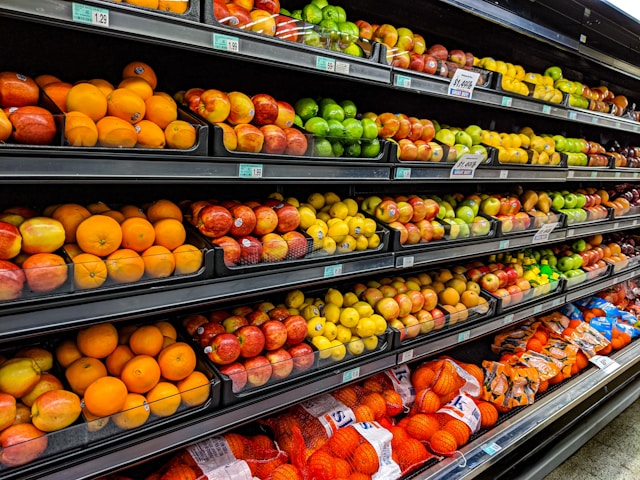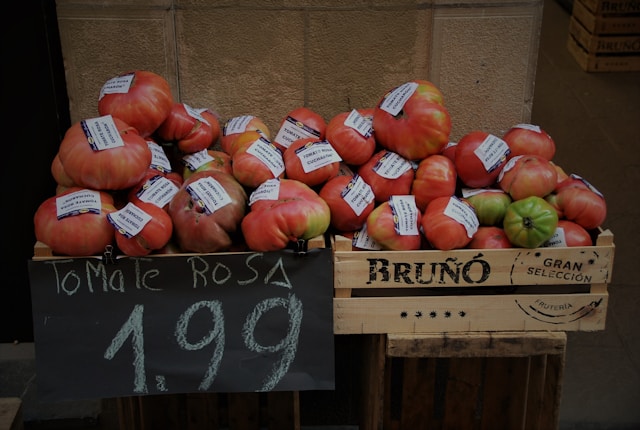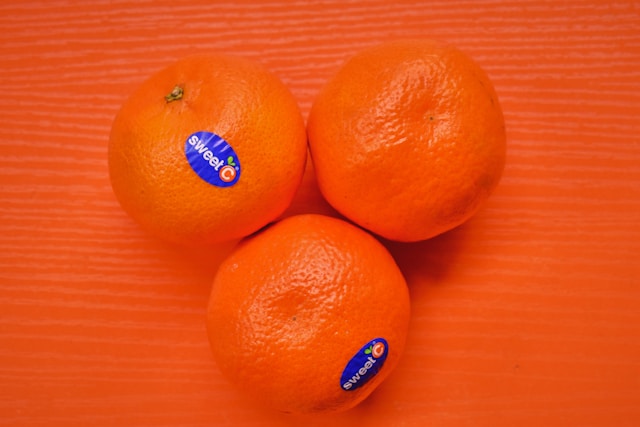Food labeling can make or break your product’s success. Poor labels cause compliance issues and lost customers.
Choosing the best food label printer involves assessing your specific needs, such as label size and material. Then, compare printer types like thermal and inkjet. Finally, verify key features like resolution, durability, and cost to find the perfect match for your business.

I know that choosing a printer seems like a small decision. But this choice has a big impact on your business. It affects your brand's look, your operational speed, and your legal standing. A great printer saves you time and money. A bad one causes endless headaches. This guide will walk you through everything. We will cover the technology, the features, and the costs. Let's make sure you get the right tool for the job.
The main types are thermal, inkjet, and laser. Thermal printers are great for black-and-white labels like barcodes. Inkjet printers are best for detailed, full-color product labels. Laser printers are used for special labels that need to be very durable.

When I first started my business, I almost bought the wrong printer. I saw a cheap thermal printer online and thought it was a great deal. It was fast and the labels were cheap. But then I realized it couldn't print in color. My branded product labels would look terrible in black and white. It was a close call that taught me a valuable lesson. The type of printer you choose must match the job you need it to do. Let's break down the technology so you don't make the same mistake.
Thermal printers are a popular choice for many businesses. They work by using heat. There are two kinds. Direct thermal printers use special heat-sensitive paper. The printhead heats the paper directly to create an image. This is simple and requires no ink or toner. However, the labels can fade over time, especially if exposed to heat or sunlight. Thermal transfer printers use a ribbon. The printhead heats the ribbon, which transfers ink onto the label. This creates a much more durable, long-lasting print. Thermal printers are perfect for shipping labels, barcodes, and date codes.
Inkjet printers are the best choice for high-quality food product labels. They work by spraying tiny droplets of ink onto the label paper. This process allows for millions of colors and incredible detail. You can print vibrant logos, beautiful product images, and sharp, easy-to-read text. This is very important for nutrition facts and ingredient lists where clarity is key. While the printers and ink can be more expensive than thermal options, the final result is far more professional. They are the standard for any business that wants its products to stand out on the shelf.
Laser printers are less common for food labels but have their place. They use a laser beam to create an image on a drum. The drum then attracts toner, which is fused onto the label paper with heat. This process creates extremely durable labels that resist moisture, friction, and UV light. They are often used for labels on products that face harsh conditions, like industrial chemicals that require GHS labels[1]. For most food businesses, a high-quality inkjet printer is a better and more cost-effective choice for primary product labels.
| Printer Type | Initial Cost | Operational Cost | Print Quality | Ideal Use Case |
|---|---|---|---|---|
| Direct Thermal | Low | Very Low (No Ink) | Good (Monochrome) | Shipping, Barcodes, Receipts |
| Thermal Transfer | Medium | Low (Ribbons) | Very Good (Monochrome) | Long-Term Barcodes, Asset Tags |
| Inkjet | Medium-High | High (Ink Cartridges) | Excellent (Full Color) | Primary Product Labels, Branding |
| Laser | High | Medium (Toner) | Excellent (Color/Mono) | Durable Labels, Sheet Labels |
Focus on five key features. You need to check the print resolution (DPI) for clarity. Also, look at supported label materials for durability. Consider speed for efficiency, software for integration, and connectivity options like Wi-Fi for ease of use.

Choosing a printer is about more than just the price tag. You need to dig into the details to find a machine that will work for you day in and day out. The features are what separate a good printer from a great one. A printer with high resolution will ensure your barcodes are always scannable. A printer that handles the right materials will keep your labels from falling off in the freezer. Let's explore these essential features one by one so you can make a smart choice.
Resolution is measured in Dots Per Inch, or DPI. A higher DPI means a sharper, clearer print. For food labels, this is not just about looking good. It is a compliance issue. Small text on ingredient lists and nutrition panels must be perfectly readable. A low-resolution printer might produce blurry text or barcodes that won't scan. Look for a printer with at least 600 DPI for basic tasks. For high-quality, full-color product labels, 1200 DPI or higher is the standard. This ensures every detail is crisp.
Your printer must be able to handle the labels you use. First, check the range of label widths it supports, from small price tags to large front-of-pack labels. Second, consider the material. Will you be printing on simple paper labels, glossy synthetic labels, or freezer-grade materials[2]? Not all printers can handle all types. Inkjet printers are often more versatile with materials than thermal printers. Make sure the printer you choose is compatible with the labels your products need to survive, whether on a dry shelf, in a refrigerator, or deep in a freezer.
How many labels do you need to print each day? A small bakery might only need to print a few dozen labels. A large production facility might need to print thousands. Printer speed is measured in inches per second (ips). A basic printer might print at 2-3 ips. An industrial printer can print at 12 ips or more. Consider your current needs but also think about your future growth. Buying a printer that is too slow will create a bottleneck in your production process.
How will the printer connect to your computers? Most printers offer a standard USB connection. Many now offer Ethernet, Bluetooth or Wi-Fi as well. A wireless connection gives you more flexibility in where you place the printer. Also, consider the software. Does the printer come with easy-to-use label design software? More importantly, is it compatible with your existing systems? This includes your inventory management, point-of-sale, and any loyalty or security platforms you use. Smooth integration is key to an efficient workflow.
Are you worried about complex FDA rules? A product recall due to a bad label would be a complete disaster. Your printer is your first line of defense in ensuring full compliance.
The right printer ensures compliance by producing clear, readable text for all required information. High-resolution printing guarantees that font sizes meet legal standards. Good software integration helps manage and print accurate nutrition facts, allergen warnings, and ingredient lists without errors.
Compliance is not an area where you can afford to cut corners. The FDA and other regional bodies have very strict rules about what must be on a food label. This includes the Nutrition Facts panel, a clear ingredient list, and prominent allergen warnings. A simple mistake can lead to huge fines or a product recall[3] that could destroy your brand's reputation. Your in-house printer gives you the power to control this process. You can make instant updates if a recipe changes or if regulations are updated. This control is critical for protecting your business.
The FDA has several core requirements for food labels.
The physical characteristics of your printer play a direct role in meeting these standards.
To match a printer to your needs, first assess your scale. Small businesses can use desktop printers. Medium to large operations need faster, industrial models. Then, decide between the control of in-house printing and the convenience of outsourcing. Finally, consider your customization needs.
I remember helping a local coffee roaster choose their first printer. They were outsourcing labels and the cost was adding up. They wanted to print in-house but were looking at a massive industrial printer that was total overkill. We sat down and analyzed their actual needs. They only needed a few hundred labels a week, but they wanted to add unique "roasted on" dates to each bag. We found a thermal label printer. It was perfect. It gave them the flexibility for variable data without the huge cost of an industrial machine. This shows why you must analyze your own specific situation.
Your production volume is the most important factor.

There are pros and cons to both approaches.
| Aspect | In-House Printing | Outsourcing Labels |
|---|---|---|
| Control | Full control over design & content | Dependent on supplier's schedule |
| Flexibility | Print on demand, easy updates | Minimum order quantities, slow changes |
| Upfront Cost | Higher (printer purchase) | Lower (no hardware cost) |
| Per-Label Cost | Lower in the long run | Higher, especially for small runs |
| Waste | Minimal (print what you need) | High (obsolete labels) |
Modern labels often do more than just state the product name. Consider if you need these features:
Eco-friendly printing uses options like biodegradable labels, linerless rolls, and non-toxic, plant-based inks. Choosing sustainability meets growing consumer demand, reduces your environmental footprint, and can enhance your brand's loyalty by showing that your business cares.
Sustainability is no longer a niche interest. It's a core value for millions of consumers, especially in the food industry. People want to know that the products they buy are good for them and good for the planet. Your packaging is the first thing they see. A label that is clearly eco-friendly sends an immediate positive signal. It can be a deciding factor for a customer choosing between your product and a competitor's on a crowded shelf. This is about more than just compliance with environmental regulations. It's about building a brand that aligns with the values of your customers.
The push for greener packaging has led to several innovations in the label industry.

Adopting sustainable labeling practices is not just an expense. It's an investment with clear returns.
Emerging technologies are making labels more intelligent and interactive. Smart labels[13] with RFID and QR codes are revolutionizing supply chain tracking, security, and consumer engagement. At the same time, AI and automation are boosting efficiency and eliminating errors in the printing process.
The world of label printing is changing fast. A label is no longer just a static piece of paper. It is becoming a dynamic digital tool. These new technologies are transforming what a label can do. They can provide detailed information to consumers, offer unprecedented visibility into the supply chain, and automate quality control processes that used to be done by hand. For a business focused on loyalty and security, like ours, these trends are not just interesting—they are essential. Adopting them is key to building a modern, efficient, and future-proof operation.
The "smart label" is the biggest trend in the industry. These labels contain technology that allows them to be read and tracked electronically.
Technology is also changing the printing process itself.
When you choose a new printer, you should think about these trends. Does the printer have the resolution to print sharp, scannable QR codes? Is its software capable of managing the data for RFID tags? Does it have the connectivity options (like Ethernet) to be integrated into an automated system in the future? Choosing a printer with these capabilities will ensure your investment remains valuable for years to come.
Don't let a simple mistake cost you time and money. A bad printer choice is a common but very costly error. You can easily avoid it by learning from the mistakes of others.
The most common mistakes are focusing only on the purchase price while ignoring the total cost of ownership. Many also fail to consider the durability requirements for their specific product's environment, such as a freezer, and overlook critical compliance needs.
It is very easy to make a mistake when buying a piece of technology you are not familiar with. The marketing can be confusing, and sales pitches often hide the true costs. I have seen business owners make the same few mistakes over and over again. They get lured in by a low sticker price or they buy a printer that is not built for the job they need it to do. These mistakes lead to frustration, wasted money, and sometimes even legal trouble. By being aware of these common pitfalls, you can navigate the buying process like an expert and make a choice that you will not regret.
The biggest mistake by far is looking only at the printer's purchase price. A cheap printer can be the most expensive one in the long run. The Total Cost of Ownership includes several factors:
The second major error is not matching the label and printer to the product's entire life cycle. A beautiful paper label printed on a standard inkjet will run and peel the second it gets wet or is put in a refrigerator. You must think about where your product will end up.
The third mistake is treating compliance as an afterthought. Some business owners buy a printer and only later realize that it cannot produce text that is clear enough to meet FDA standards. Or they find out that its basic software cannot handle the complex formatting of a Nutrition Facts panel. Always verify that the printer's resolution is high enough (1200 DPI is a safe bet for food). More importantly, evaluate the software it comes with. Ensure it has templates and features designed specifically for food labeling to make meeting your legal obligations easy and automatic.
Choosing the right food label printer is a critical strategic decision for your business. It directly impacts your brand image, operational efficiency, and your ability to comply with the law.
I hope this guide has given you the confidence to choose the right printer. If you need expert advice or want to explore integrated solutions, contact us at loyalty-secutech.com.
